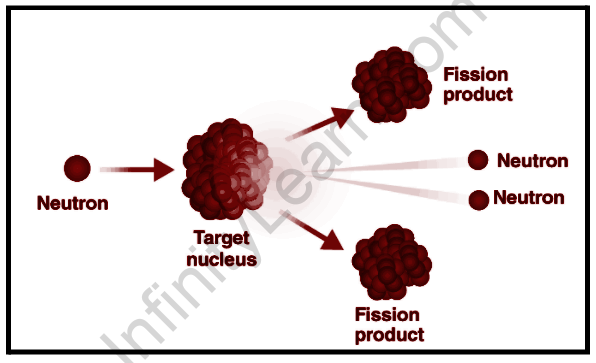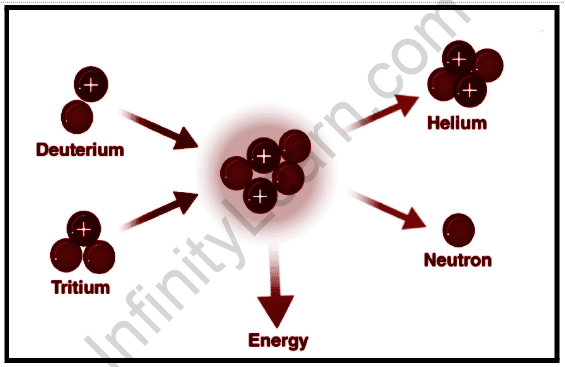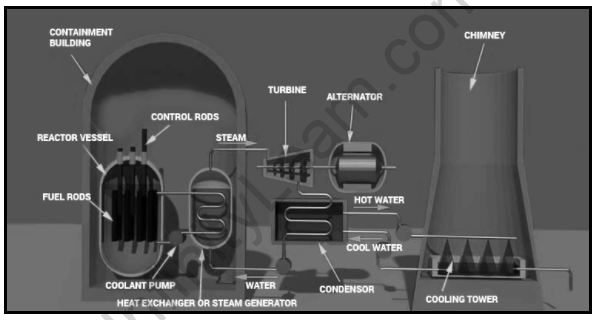Table of Contents
The nucleus, which is the foundation of nuclear science, is composed of protons and neutrons. Understanding the process behind fission and fusion, which involves the dispersion and combination of elemental nuclei and isotopes, is an important part of nuclear research. When the individual masses of each of these subatomic particles of any given element are added together, the total mass of the nucleus is always greater than the mass of the nucleus as a whole. The concept of nuclear binding energy is missing from this finding. Nuclear binding energy is the energy necessary to keep a nucleus’ protons and neutrons together, and nuclear power is the energy generated during nuclear fission or fusion. The overall mass of an element’s protons and neutrons is smaller than the mass of the nucleus as a whole. The nuclear binding energy is responsible for the mass difference. Nuclear binding energy is essentially seen as mass, and that mass becomes “missing.” Nuclear energy, also known as the mass expelled from the process as neutrons, photons, or any other trajectory, is the missing mass, which is called the mass defect. In a nutshell, the phrases “mass defect” and “nuclear binding energy” are synonymous.
The information about nuclear fission and fusion from various physics-related articles are available here. Nuclear fission and nuclear fusion are important topics in physics. Students who want to flourish in physics need to be well known about nuclear fission and fusion to get deep knowledge about it to do well on their exams. The definitions, diagrams, and brief explanations are provided here to assist students in effectively understanding the respective topic. Continue to visit our website for additional physics help.
Overview
Reactions appear all around us, and they happen all the time. Specific reactions, on the other hand, may have harmful effects on humans if they get into close proximity. Humankind has discovered several ways to manipulate the atom to unleash its intrinsic energy using two separate approaches. Chemical reactions are examples of events that can be both beneficial and detrimental, especially if they are not managed properly. The chemical reaction is the production of a new compound molecule as a result of the rearrangement of valence electrons in interacting atoms and molecules with the release or absorption of energy. The nucleus is not harmed in any way during this process. The electrons in the inner orbits are unaffected as well.
Nuclear Fission
Nuclear reactions, such as fission reactions, are, however, regarded to be extremely energetic in nature. It signifies that the process generates a lot of energy while it’s running. The definition of nuclear fission is when a particle or atom divides into two smaller and lighter nuclei during a nuclear process. It’s also worth noting that when an atom splits, the two daughter nuclei weigh less than the parent nucleus. The definition of nuclear fission is that it will continue to break atoms one by one. It also produces a tremendous quantity of energy. As a result, this type of reaction is frequently explosive. Uranium, for example, is a nuclear-reactive element. Nuclear fission can happen naturally in certain instances or be caused by bombarding the nucleus with various particles (e.g., protons, neutrons, or alpha particles) or by gamma-ray radiation.
During nuclear fission, a tremendous quantity of energy is released, resulting in the formation of radioactive materials and the discharge of many neutrons. Such neutrons can create a chain fission process in the uranium or plutonium nucleus, releasing further neutrons. This can lead to an uncontrollable chain reaction that continues until all of the initial material has been used up, releasing a tremendous quantity of energy in the process.

Nuclear Fission Energy: The release of a substantial amount of energy occurs when neutrons split. There is a high repulsive force between the protons throughout this process. The powerful nuclear force, however, binds them together. Each proton typically exerts a repulsive force of 20N on every other proton, which is comparable to the force exerted by a hand resting on a person’s lap. For these atomic particles, this is a massive force. Because the products of fission are more stable, subsequent splitting is difficult. The nucleonic mass decreases as the binding energy for fission products increases. The release of energy is the outcome of the large binding energy and decreased mass. Nuclear binding energy and mass flaws are also referred to as the same thing.
Nuclear Fusion
Nuclear fusion occurs when two or more light nuclei collide to create a heavier nucleus. Nuclear fusion is a process that occurs in low-atomic-number atoms like hydrogen. Nuclear fusion is the polar opposite of nuclear fission, in which heavy elements diffuse and light elements are formed. Nuclear fusion and fission both generate enormous amounts of energy.

On Earth, this is accomplished by mixing two hydrogen isotopes, such as deuterium and tritium. Hydrogen, which is made up of a single proton and an electron, is the lightest of all the elements in the periodic table. Deuterium contains an extra neutron in its nucleus, allowing it to replace one of the hydrogen atoms in water to create heavy water. Tritium carries two more neutrons than hydrogen, making it three times heavier.
The components of deuterium and tritium are recombined to generate a helium atom and a fast neutron when they fuse together. The residual mass is converted into kinetic energy as the two heavy isotopes are recombined into helium atoms and a neutron.
For the nuclear fusion reaction to occur, the involved nuclei must be brought together. They should be brought near enough so that nuclear forces activate and bind the nuclei together.
Difference Between Nuclear Fission and Nuclear Fusion
| Nuclear Fission | Nuclear Fusion |
| It is a nuclear reaction in which a heavier atom is broken down into two or lighter atoms. | It is a nuclear reaction in which two or more tiny atoms are fused together to generate a big atom. |
| It will not happen naturally. | Nuclear fusion processes can be found all around the universe. It is used by every star to generate energy. |
| It generates a large amount of energy. | It generates a larger quantity of energy than the fission reaction. |
| No need for a lot of energy to break an atom into two. | Needs a lot of heat and pressure for the process to happen. |
Nuclear Power Plant
A nuclear power plant is a thermal power plant with a nuclear reactor as its major source of energy generation. A nuclear reactor is a device that causes a nuclear chain reaction to occur. Heat (produced by a nuclear reactor) produces steam, which drives a steam turbine coupled to an electric generator, which generates electricity.
The heat contained in steam is converted into mechanical energy using a steam turbine. In a nuclear power plant, the generator turns the turbine’s kinetic energy into electrical energy. The cooling system extracts heat from the reactor core and delivers it to another part of the station, where it can be used to generate power or do other beneficial tasks.

Safety valves can be used in an emergency to prevent pipes from bursting or the reactor from exploding. The feedwater system regulates the water level in the steam generator and nuclear reactor. Most nuclear power plants require two different off-site power sources that feed station service transformers that are sufficiently spaced in the switchyard and can receive power from several transmission lines.
In nuclear reactors, the element uranium is used as a fuel to initiate the chain reaction. Uranium is a relatively heavy element that may be found largely in seawater and rocks.
Nuclear Power Plants: Objective Questions
- What is the efficiency of a nuclear power plant in comparison to a conventional thermal power plant?
(a) more
(b) less
(c) same
(d) unpredictable.
Answer: b
- A nuclear unit becoming critical means
(a) the nuclear unit is generating power to a rated capacity
(b) the nuclear unit is capable of generating much more than the rated capacity
(c) there will be danger of the nuclear spread
(d) the chain reaction that creates automatic splitting of the fuel nuclei has been established
Answer: d
- The important moderator being used in nuclear plants is
(a) heavy water
(b) concrete and bricks
(c) deuterium
(d) graphite.
Answer: d
Also read: Velocity – Time and Position – Time Graphs
FAQs – Frequently Asked Questions
What are nuclear fission and nuclear fusion?
Both nuclear fission and fusion reactions emit a significant quantity of energy. The former entails the division of an atom into two. The latter entails the fusion of two atoms into a single atom.
What is nuclear energy?
The energy released during nuclear reactions, such as fusion and fission, is referred to as nuclear energy. During the breaking and combining of atoms, these reactions generate a lot of heat or energy.
What is the life span of a nuclear power station?
A nuclear power plant's average lifespan is 40 years. Modern pressurized water reactors, on the other hand, have a 60-year lifespan.





